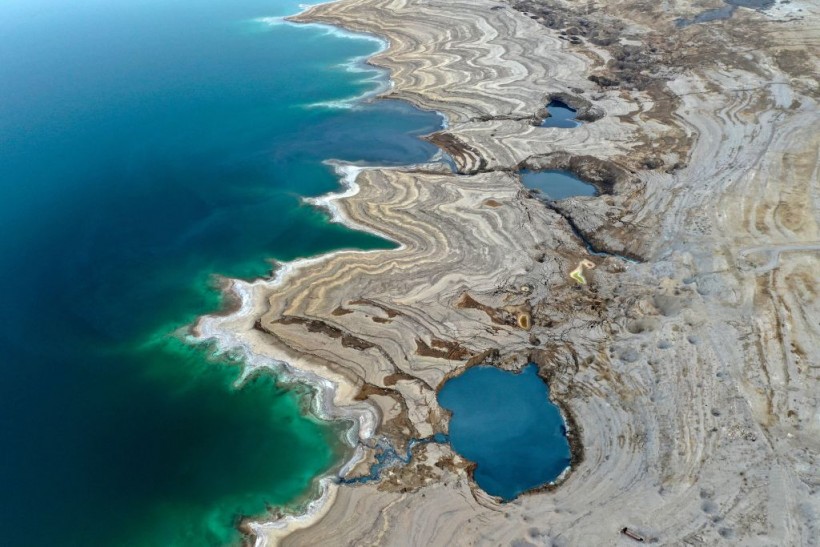A new geosciences study suggests that the great water bodies covering our planet were composed of an intense amount of salt compared to its salinity observed today. The findings of the study could contribute to the collective link between the evolution of natural aspects of early Earth. This includes the changes in the atmospheric sheet, climate, and even the existence of life on the planet.
The study of the salty Earth was led by Yale University's Department of Earth and Planetary Sciences expert Jun Korenaga and Department of Geology and Geophysics expert Meng Guo. According to their investigation, excessive salt levels manifested on the oceans during the first phase of Early earth ran for about 500 million years. Compared to the modern-day readings of about 2.5 percent in ocean salt, the prehistoric readings could hit up to 7.5 percent.
Salty Waters of Early Earth

A picture taken on September 21, 2021, near Israel's Kibbutz Ein Gedi, shows sinkholes filled with water which were formed as a result of a drop in the water level in the Dead Sea. - A spectacular expanse of water in the desert, flanked by cliffs to east and west, the Dead Sea has lost a third of its surface area since 1960. The blue water recedes about a metre (yard) every year, leaving behind a lunar landscape whitened by salt and perforated with gaping holes.
The salinity of oceans in ancient Earth was already discussed in previous studies. Among the compiled readings from mutual studies, the salt levels were theorized to have a range of up to 10 times higher than the present salinity.
Author and professor Korenaga explained in a YaleNews report that there were many speculations about the chemistry of early oceans. However, the recent findings could build a strong foundation on the compositions existing during the Earth's first geological developments.
The team was driven by the results that came up in previous studies, not just on Earth's oceanic salinity but the geological chemistry of the planet in general. The main interest of their examination was the state and levels of halogen materials were present on the younger Earth. These materials included massive concords of bromine, fluorine, chlorine, and iodine. Stable halogens are believed as critical ingredients to producing massive amounts of salt on the planet by reacting with certain metals.
Halogens Role in Earth's Structural Evolution and the Birth of Life
Halogens are theorized to have roles not just on the early Earth's salinity but also other aspects of the planet that evolved through interacting with each other. The processes of the ancient planetary evolution induced by halogens include the vast oceans, the atmosphere, and even the mantle below. Studying halogens may also define how the salt in water bodies helped form the first existence of life.
Guo said in the report that the chemistry of seawater could provide evidence on how gases such as carbon dioxide were distributed in the right amounts between the ocean and the atmosphere. Previous studies on the same matter included several ratios of elements found on the mantle and crust. According to the experts, the halogens and chlorides circulated back and forth from both the regions during the first 500 million years of Earth, allowing the salinity to be distributed and eventually lessened on the ocean bodies.
Although these estimates were only based on assumptions, the data have remained constant. With the contributing observations from the crystallization and melting transitions of the elements on the said regions, the estimates served as a clue that most halogens could be found in just the right depth below Earth's surface. According to Korenaga, the results presented in the new study contradict the scientific community's initial knowledge towards the correlation of chemicals and the interior of the planet over the aspects of our planet's evolution process.
The research was supported by the National Science Foundation and NASA. The findings appear in the journal Proceedings of the National Academy of Sciences, titled "A halogen budget of the bulk silicate Earth points to a history of early halogen degassing followed by net regassing."
RELATED ARTICLE: Dolphins Death Rate in Brazilian Amazon Continues to Rise; Fishing Bycatch Suspected as Top Killers of Marine Mammals
Check out more news and information on Ocean in Science Times.














